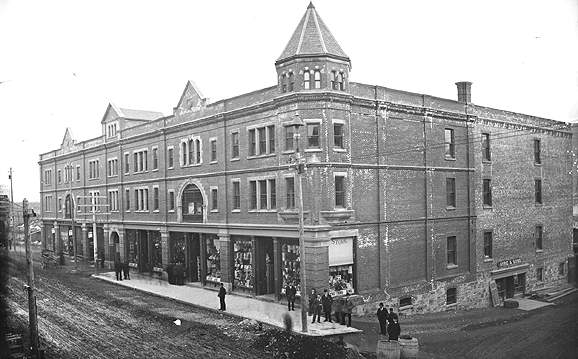I guess as an architect, it’s hard to imagine why many people see architecture and engineering as the same, or perhaps one discipline as simply a subset of the other. It’s somewhat akin to thinking that doctors and chiropractors are really the just the same. This is a ridiculous notion to most.
The distinctions between architects and engineers have always been contentious. It’s that way here in Newfoundland & Labrador, across Canada, and around the world. The problem is exacerbated by engineers, many of whom make every effort to blur the lines between the disciplines so that they can practice architecture. This is not as uncommon as you may think, and the effort along these lines usually peaks when economies tank.

But let’s be clear from the very outset. The vast majority of engineers have no desire whatsoever to practice architecture. For starters, most engineers are not involved with building design at all. Their talents (huge talents in many innovative and managerial ways) are required elsewhere. No architect will ever likely be involved in design for space travel. That is, unless, there is a sudden desire to make space stations more tasteful.
The most talented and inspired engineers that I had the pleasure of working with during my career (and there were indeed many) had no desire whatsoever to practice architecture.
To explain, within the realm of building design, we have engineers with distinct expertise: typically civil, structural, mechanical and electrical engineers. They are required to declare their specific area of expertise, and cross discipline practice is not tolerated by the profession. It can, in fact, be subject to extreme sanctions, not the least of which is loss of license. These subset engineering disciplines generally have no desire to practice architecture either, with one notable exception – civil engineers. Those are the people who design our roads, water and sewer systems. One can only presume that it must be shit work because a small handful of them cast a very covetous eye at what architects do.
It is always an innocuous progression. Insidious, and repeated by each passing generation. Because most every municipality needs water and sewer, civil engineers are embedded in small communities across the country. In fact, most communities historically had designated “town engineers”. They would design the roads and sewers almost continuously, as the need was ever advancing – that was the progress of “civilized” society. But then a local council would want an extra bay on the fire hall, or mezzanine built in the rink. This was the thin edge of the wedge. The councils didn’t know any architects anyway. They were all in the city. But over the years, this would evolve into school extensions, arenas, depots, etc. And the town engineer would conveniently never see fit to draw the line and educate their captive client that they were getting out of their league.
Invariably, if these engineers felt they were getting beyond the bounds of their expertise, they would seek out architectural technicians who would have been working in architectural firms for years preparing drawings for schools, offices and recreation facilities. They would offer handsome remuneration to attract the expertise they didn’t have. Over the years, I routinely encountered engineering companies advertising for senior architectural draftsmen and technicians. It begged the obvious question.
With a skilled architectural technician on board, civil engineers could compete against architectural firms for building design projects. The tech had the chops and the engineer had the stamp. Bring it on. Such work generally flew under the radar because the scale was minor and the context was local.
The result: poorly designed, downright ugly buildings. You need not look further than our beloved Atlantic Place in St. John’s. This is the ultimate and extreme example of design by draftsman, stamp by engineer. In fact, it is with considerable relief I can say that no architect was even peripherally involved in the original design of this St. John’s architectural albatross.

But as one of my old bosses used to say, “No one was ever sued for an ugly building.”
Too bad.
Unfortunately, in my professional life, I encountered hundreds of buildings across the province that were contrary to national building codes and local life safety / accessibility regulations. This should be cause for concern. Were these designed by civil engineers? I cannot say. Building codes have become more stringent over the years, so this has to be accounted for and put into perspective. To prove any such contention, you would have to examine original drawings that, for the most part, disappear with time.
But they were not designed by architects.

A very interesting piece. Love the old photo.